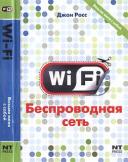Новые книги
Вопрос и Ответ 1
Вопросы и
Ответы 1. Как отобразить растровое
изображение, чтобы определенный его цвет был
"прозрачным"? Эффект "прозрачного" фона
достигается методом BrushCopy объекта Canvas:
В качестве фонового, для
изображения, цвета выбирается цвет его левой
нижней точки (именно эта точка является
"фоновой" при рисовании глифов для кнопок в
Delphi). ............ BrushCopy(Bounds(10, 10, Bitmap.Width,
Bitmap.Height), Bitmap, Bounds(0, 0, Bitmap.Width, Bitmap.Height), Bitmap.Canvas.Pixels[0,
Bitmap.Height - 1]); ............ ...последняя страница следующая...
оглавление

